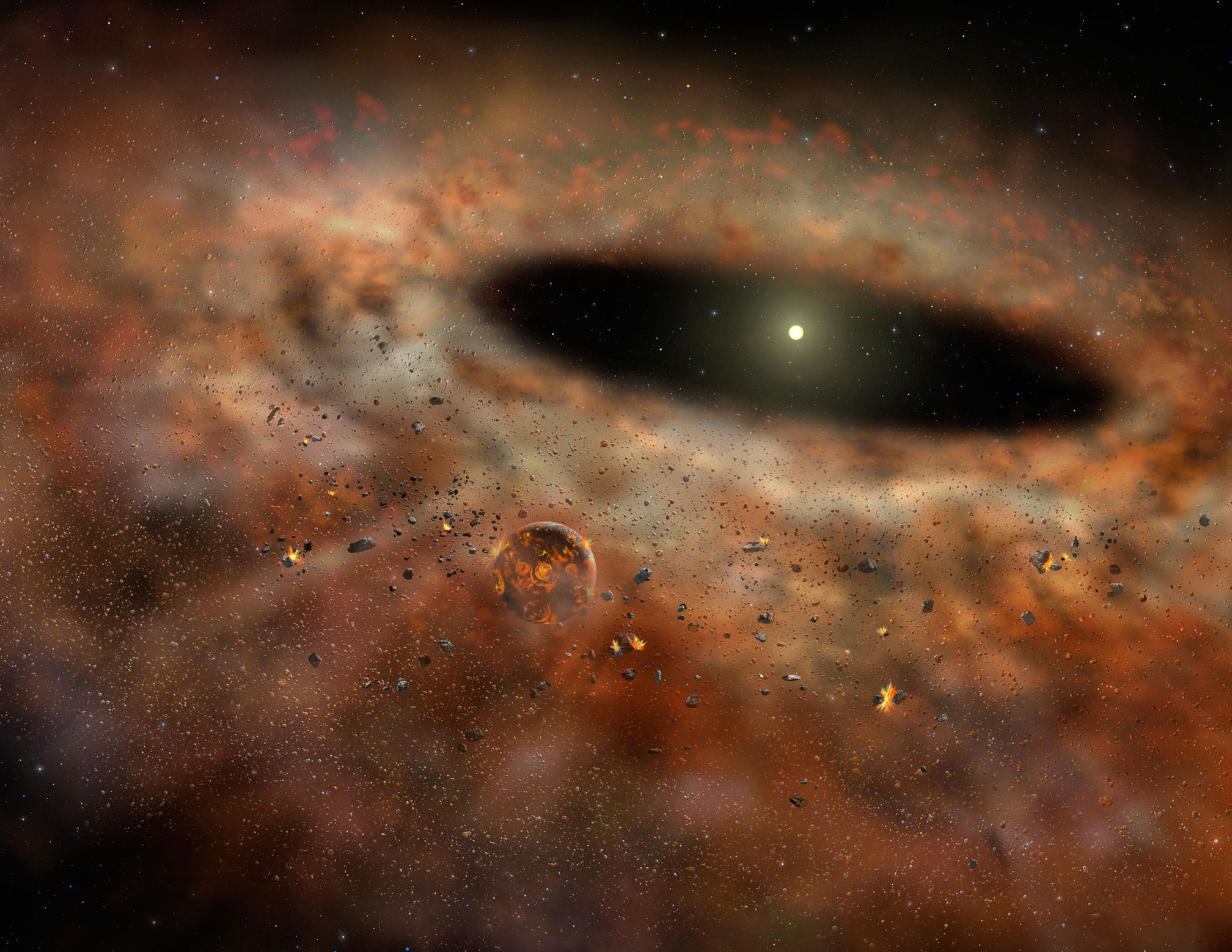Astronomy has always taught us that planets form from vast clouds of dust and gas orbiting young stars. It’s a gradual process of accretion that takes hundreds of thousands, perhaps even millions, of years… or does it?
During a 1983 sky survey with the Infrared Astronomical Satellite (IRAS) astronomers identified a young Sun-like star with a large cloud of dust surrounding it. The star, named TYC 8241 2652 1, is 450 light years away and what they had found around it was thought to be the beginnings of a solar system – the protoplanetary disc from which planets form.
Fast forward to 2008. Astronomers observed at the same star with a different infrared telescope, the Gemini South Observatory in Chile. What was observed looked a lot like what was previously seen in ’83.
Then, in 2009, they looked again. Curiously, the brightness of the dust cloud was only a third of what it was the year before. And in WISE observations made the very next year, it had disappeared entirely.
“It’s like the classic magician’s trick: now you see it, now you don’t. Only in this case we’re talking about enough dust to fill an inner solar system, and it really is gone.”
– Carl Melis, lead author and postdoctoral fellow at UC San Diego
Abracadabra?
“It’s as if you took a conventional picture of the planet Saturn today and then came back two years later and found that its rings had disappeared,” said study co-author and circumstellar disk expert Ben Zuckerman of UCLA.
It’s always been thought that planets take some time to form, in the order of hundreds of thousands of years. Although that may seem like forever to humans, it’s quick in cosmic time scales. But if what they’ve seen here with TYC 8241 is in fact planetary formation, well… it may happen a lot faster than anyone thought.
On the other hand, the star could have somehow blown all the dust out of the system. More research will be needed to see if that was the case.
The really interesting thing here is that astronomers have traditionally looked for these kinds of dust clouds around stars to spot planetary formation in action. But if planets form quicker than we thought, and the dust clouds are only fleeting features, then there may be a lot more solar systems out there that we can’t directly observe.
“People often calculate the percentage of stars that have a large amount of dust to get a reasonable estimate of the percentage of stars with planetary systems, but if the dust avalanche model is correct, we cannot do that anymore,” said study co-author Inseok Song, assistant professor of physics and astronomy at the University of Georgia. “Many stars without any detectable dust may have mature planetary systems that are simply undetectable.”
Read more in the news release from the University of Georgia.
Top image: Gemini Observatory/AURA artwork by Lynette Cook.

